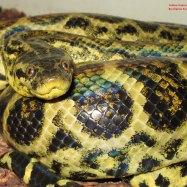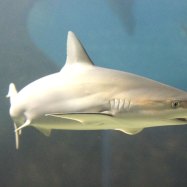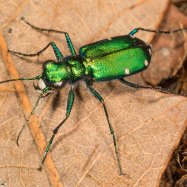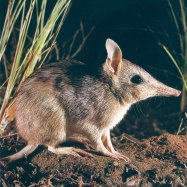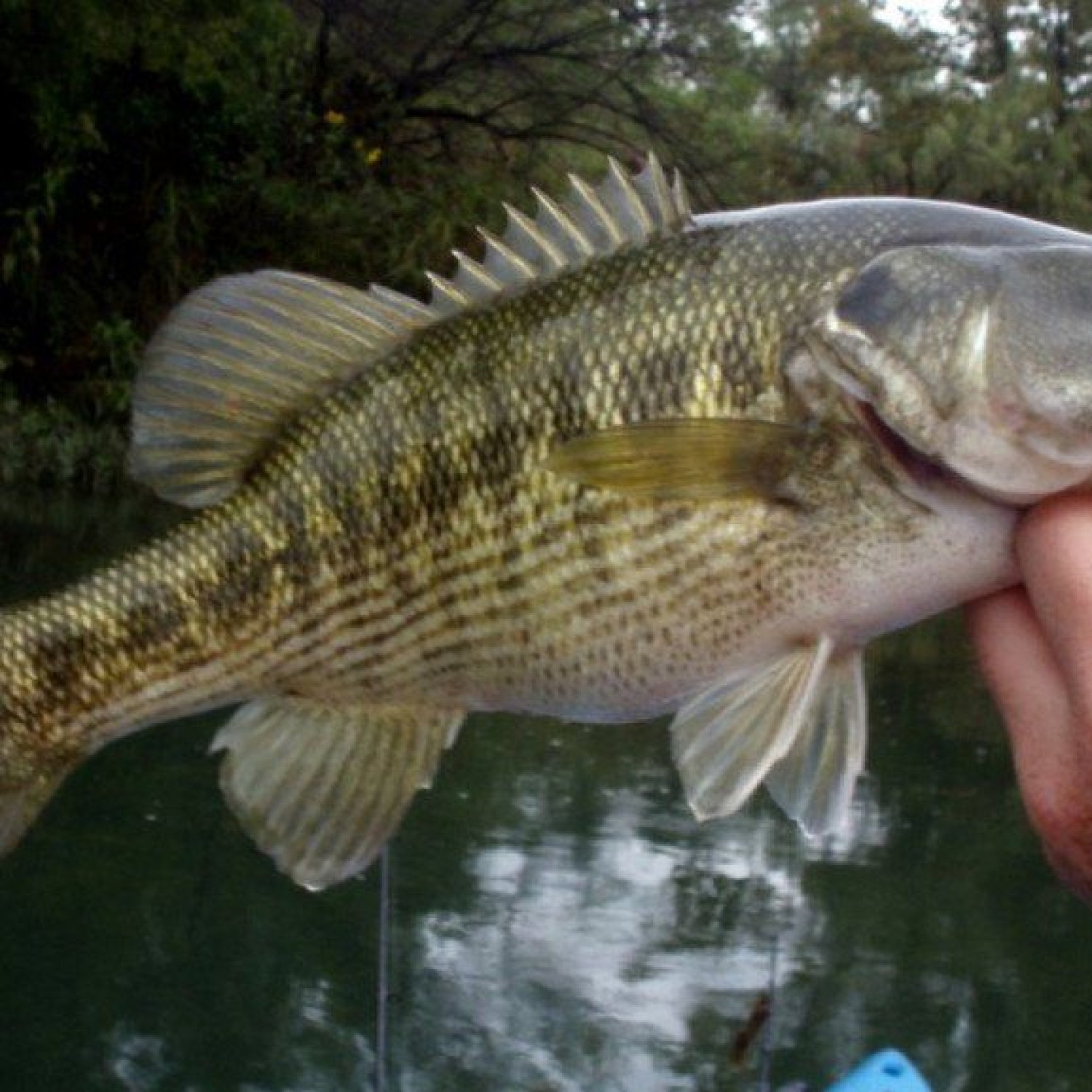
Guadalupe Bass
Averages about 7-9 inches (18-23 cm) in length
The Guadalupe Bass, found in the Guadalupe River drainage, belongs to the Centrarchidae family. With a streamlined body and broad head, these small fish average 7-9 inches in length. Keep an eye out for these beautiful creatures while exploring the river's waters! #GuadalupeBass #Centrarchidae #GuadalupeRiver #TexasWildlife
Animal Details Summary:
Common Name: Guadalupe Bass
Kingdom: Animalia
Habitat: Rivers, streams, and reservoirs
The Elegant Guadalupe Bass: A Hidden Gem of South-central Texas Rivers
The rivers of South-central Texas are home to some of the most exotic and diverse wildlife in the United States. Among the many aquatic creatures that call this region home, one stands out for its remarkable features and unique beauty – the Guadalupe Bass.Scientifically known as Micropterus treculii, the Guadalupe Bass is a species of freshwater fish, also commonly referred to as simply “Guadalupe Bass” due to its distribution in Guadalupe River drainage. Its name is derived from the species’ first recorded sighting in Texas by French naturalist Louis Trecul in the mid-1800s Guadalupe Bass.
But what makes this fish truly stand out? Let’s dive deeper into its features and characteristics to uncover the hidden gem of South-central Texas rivers.
Classified as a Centrarchidae
The Guadalupe Bass belongs to the kingdom Animalia and phylum Chordata, making it an animal with a backbone. However, it falls under the class Actinopterygii, or ray-finned fishes, which are characterized by their bony fins and skeleton.Within the order Perciformes, which consists of more than 10,000 species of fish, the Guadalupe Bass is classified as a Centrarchidae, or sunfish. This family includes other species like largemouth bass, smallmouth bass, and bluegill.
A Unique Habitat
The Guadalupe Bass is primarily found in the rivers, streams, and reservoirs of south-central Texas, specifically in the Colorado and Guadalupe river systems. These rivers have clear and cool water, a perfect environment for the bass to thrive.Unlike other species of bass, the Guadalupe Bass prefers to stay in clear streams with rocky bottoms, rather than lakes. This particular habitat requirement makes it a sensitive species, as any disturbance in its environment can significantly impact its population Giant Panda Bear.
A Carnivorous Feeding Method
As a fish of prey, the Guadalupe Bass is a carnivore, meaning it feeds almost exclusively on other animals. Its diet consists of small fish (such as minnows and shiners), insects, crustaceans, and occasionally small frogs and other amphibians.This feeding method is crucial to maintaining a healthy balance in the ecosystem, as the Guadalupe Bass plays a role in controlling the population of smaller fish and insects in the river systems.
A Look at Its Physical Features
One of the most striking features of the Guadalupe Bass is its coloration. It has a greenish dark olive back, lighter sides, and a white belly. This provides the perfect camouflage in its rocky habitat, making it harder for predators to spot.In addition, the Guadalupe Bass has a streamlined body with a broad head and a wide mouth, which enables it to quickly and efficiently attack its prey. This is also an adaptation to its fast-moving habitat, allowing it to navigate through the currents with ease.
The Perfect Size
On average, the Guadalupe Bass grows to be about 7-9 inches (18-23 cm) in length. Though not very large, it is the perfect size for anglers to fish, making it a popular species for recreational fishing in Texas.However, due to overfishing, pollution, and habitat destruction, the bass population has been declining in recent years. To ensure the sustainability of this species, Texas Parks and Wildlife Department has put regulations in place to limit the catch of Guadalupe Bass. This has resulted in an increase in population and has helped to preserve the species.
Beyond Borders
While the Guadalupe Bass finds its origin in the United States, specifically in Texas, it has gained popularity beyond just its home country. The Texas Hill Country, where the bass is found, has become a popular fishing destination for enthusiasts from all over the world.This, in turn, has brought attention to the conservation efforts for the species, making it a unique case of a single fish bringing people together for a greater cause.
An Example of Successful Conservation Efforts
The Guadalupe Bass serves as an excellent example of how conservation efforts can help revive endangered species and maintain the balance of nature. In the late 20th century, the Guadalupe Bass population had taken a severe hit due to pollution, habitat destruction, and the introduction of non-native fish species.However, thanks to rigorous restoration and conservation efforts, the population of Guadalupe Bass has been steadily increasing. In 2004, the bass was officially designated as the State Fish of Texas, recognizing its significance as not only a native species but also a symbol of successful conservation efforts.
In Conclusion
In a world where wildlife and their habitats are constantly under threat, the Guadalupe Bass serves as a reminder of the resilience and beauty of nature. As we continue to learn more about this majestic species, its significance in southern Texas, and the efforts being made to preserve it, it is crucial that we also take steps to protect its habitat and ensure its survival for generations to come.So the next time you visit the rivers of southern Texas, be sure to keep an eye out for the elegant Guadalupe Bass, a hidden gem that is a testament to the importance of conservation and the value of our natural world.

Guadalupe Bass
Animal Details Guadalupe Bass - Scientific Name: Micropterus treculii
- Category: Animals G
- Scientific Name: Micropterus treculii
- Common Name: Guadalupe Bass
- Kingdom: Animalia
- Phylum: Chordata
- Class: Actinopterygii
- Order: Perciformes
- Family: Centrarchidae
- Habitat: Rivers, streams, and reservoirs
- Feeding Method: Carnivorous
- Geographical Distribution: South-central Texas, USA
- Country of Origin: United States
- Location: Guadalupe River drainage
- Animal Coloration: Greenish dark olive back, lighter sides, and a white belly
- Body Shape: Streamlined with a broad head and mouth
- Length: Averages about 7-9 inches (18-23 cm) in length

Guadalupe Bass
- Adult Size: Up to 12 inches (30 cm) in length
- Average Lifespan: 5-7 years
- Reproduction: Sexual
- Reproductive Behavior: Spawning occurs in the spring
- Sound or Call: Not known to produce sounds or calls
- Migration Pattern: Non-migratory
- Social Groups: Solitary
- Behavior: Aggressive and territorial
- Threats: Habitat loss, pollution, and hybridization with introduced species
- Conservation Status: Endangered
- Impact on Ecosystem: Plays a significant role in the food chain as a predator
- Human Use: Sport fishing
- Distinctive Features: Dark band running horizontally along the sides
- Interesting Facts: Endemic to Texas and is the official state fish of Texas
- Predator: Larger predatory fish
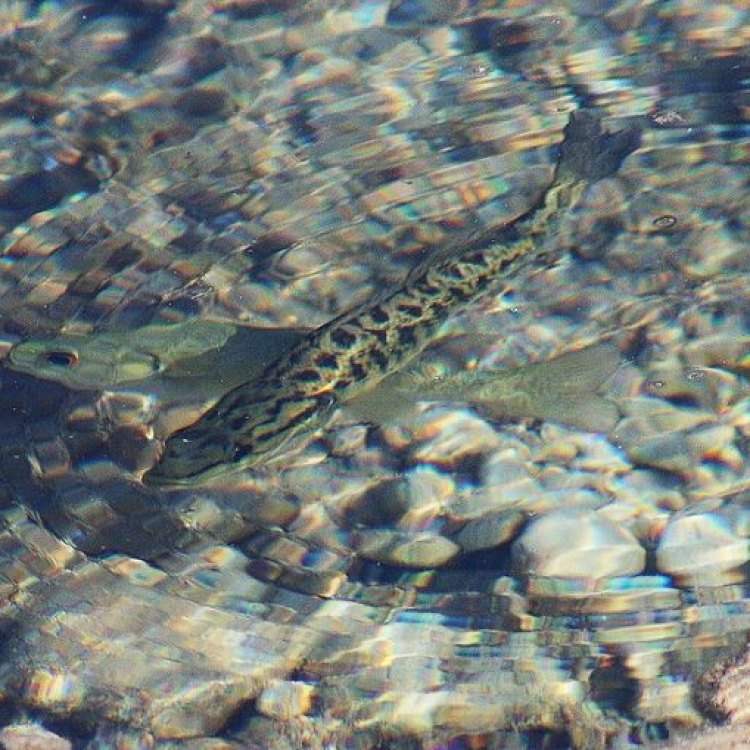
Micropterus treculii
The Enigmatic Guadalupe Bass: A Rare and Endangered Species
The Guadalupe Bass (Micropterus treculii) is a freshwater fish species, native to the rivers and streams of central Texas in the United States. With an adult size of up to 12 inches (30 cm), it may not be the largest fish in the water, but it certainly has a significant impact on the ecosystem it inhabits. This small but mighty creature has a unique set of characteristics that make it stand out among other fish species, yet it is also one of the most endangered fish species in North America.The Guadalupe Bass is known for its dark band, running horizontally along the sides of its body, giving it a distinctive appearance PeaceOfAnimals.Com. This dark stripe sets it apart from its close relative, the Smallmouth Bass, which has vertical bands. It is this unique feature that caught the attention of French naturalist Louis Jean Pierre Vieillot, who first described the Guadalupe Bass in 1829.
The Guadalupe Bass is a sexually reproducing species, with spawning occurring in the spring. The male fish create nests in shallow water, and the female deposits her eggs there for fertilization. Once the eggs hatch, the male guards the nest until the young fish are mature enough to venture out on their own. The average lifespan of this species is 5-7 years, with the maximum recorded age being 8 years.
Unlike other fish species that migrate, the Guadalupe Bass is non-migratory, preferring to stay in the same area throughout its life. This makes them susceptible to local threats, such as habitat loss and pollution. One of the major threats to the Guadalupe Bass is hybridization with introduced species, such as the Smallmouth Bass and the Spotted Bass Glechon. This hybridization reduces the genetic diversity of the species, making it more vulnerable to diseases and other environmental stressors.
The Guadalupe Bass is a solitary fish, rarely found in social groups. They are territorial creatures, particularly during the breeding season, and can be quite aggressive towards other fish that enter their territory. They are known to attack and eat smaller fish, insects, and crustaceans, making them an essential component of the food chain in their ecosystem. As predators, they play a significant role in controlling the population of other species, maintaining a balance in the ecosystem.
Despite its crucial role in the ecosystem, the Guadalupe Bass is facing severe threats to its survival. Human activities, such as damming and water diversion, have fragmented its natural habitat, disrupting its breeding and feeding patterns. This, combined with pollution from agricultural and industrial activities, has led to a rapid decline in the population of this species. According to the International Union for Conservation of Nature (IUCN), the Guadalupe Bass is listed as endangered, with its population decreasing by more than 50% in the last 10 years.
In addition to its ecological significance, the Guadalupe Bass also has cultural importance in Texas. It is the official state fish of Texas and is deeply rooted in the state's history and tradition. It is also a popular target for sport fishing, known for its vigorous fight and challenging catch. However, unsustainable fishing practices and the destruction of its habitat have significantly reduced its population, threatening its existence.
Efforts are being made to conserve and protect the Guadalupe Bass, including habitat restoration and protection initiatives, population monitoring, and breeding programs. Organizations such as the Texas Parks and Wildlife Department, the U.S. Fish and Wildlife Service, and conservation groups like the Native Fish Society are working towards preserving this unique species.
The Guadalupe Bass's conservation efforts not only focus on saving this species but also on preserving the diversity and health of the ecosystem it inhabits. The decline of this species could have a significant impact on the food chain, leading to the potential decline of other species and disrupting the delicate balance of the ecosystem.
In addition to its distinctive features and ecological significance, the Guadalupe Bass also has some fascinating facts that make it an even more remarkable species. It is endemic to Texas, meaning it is found exclusively in this state. Its name comes from the Guadalupe River, where it was first discovered. The Guadalupe Bass also has the unique ability to live in different types of water, including both clear and murky waters, making it a highly adaptable species.
Despite its small size, the Guadalupe Bass has its fair share of predators. Larger predatory fish, such as the Largemouth Bass, Channel Catfish, and Alligator Gar, prey on younger or smaller Guadalupe Bass. The larger the Guadalupe Bass becomes, the less likely it is to be preyed upon, as it can put up a fierce fight against its predators.
In conclusion, the Guadalupe Bass is an intriguing and unique fish species that plays an essential role in its ecosystem. Its distinctive features and behavior make it stand out among other fish, and it has cultural significance in its native state of Texas. However, human activities and environmental threats are pushing this species towards extinction, highlighting the need for conservation efforts. By protecting and preserving the Guadalupe Bass, we are not only saving a fish species – we are preserving the balance and diversity of an entire ecosystem.
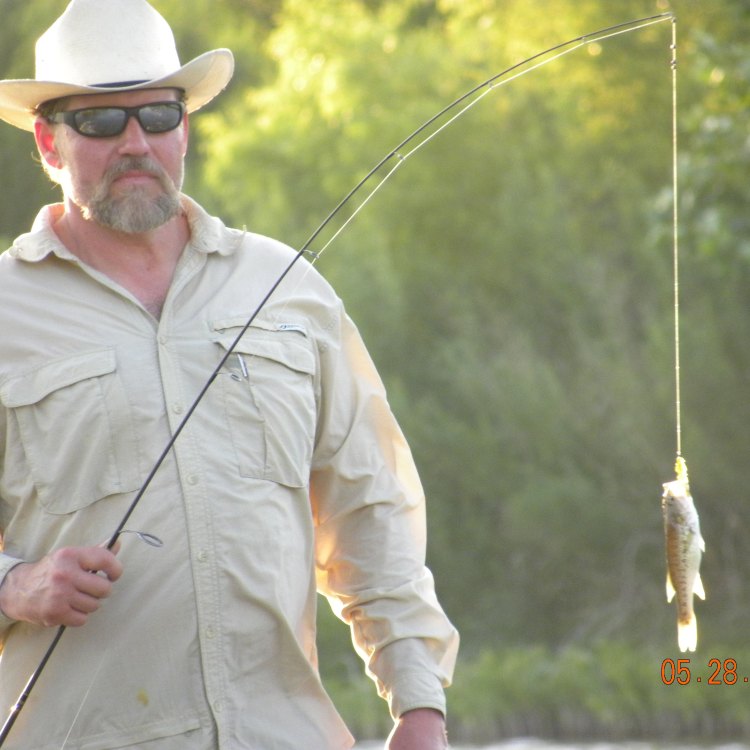
The Elegant Guadalupe Bass: A Hidden Gem of South-central Texas Rivers
Disclaimer: The content provided is for informational purposes only. We cannot guarantee the accuracy of the information on this page 100%. All information provided here may change without prior notice.

